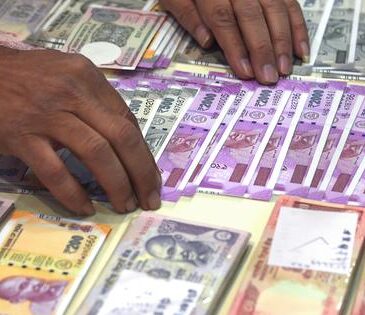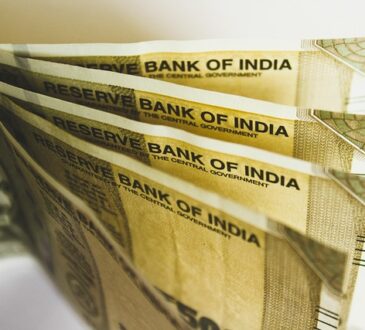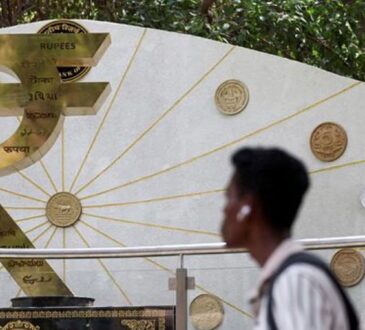Dollar weakness key worry for tech in FY26, says Kotak: Wipro, Persistent, Mphasis may be hit most – Industry News
The sharp depreciation of the US dollar over the past three months poses a growing challenge for Indian IT companies, particularly those with a high concentration of USD-denominated revenues. The USD has depreciated sharply over the past three months, approximately 4 per cent against the INR and even more significantly against the EUR (7.6 per cent) and GBP (9.9 per cent). This sharp INR appreciation can negatively impact profitability, especially for mid-tier firms with high offshore exposure and limited currency hedging. Per an analysis report by Kotak Institutional Equities, the extent of the impact on earnings will depend on several factors – effort mix, currency exposure, profitability and hedge policies.
With the Indian IT sector navigating a cost-sensitive demand environment, the emerging currency headwind could weigh heavily on earnings in FY26, and companies like Persistent, Mphasis, and Wipro are expected to face the greatest downside risk, it said. The impact, it added, will be more pronounced for companies with lower profitability.
Over the past three months, INR has appreciated by 3.5 per cent against the USD. The Indian Rupee on May 7 had declined by 1.5 per cent against the US Dollar (USD). On May 8, INR dropped by Rs 1.30 in a single day, opening at 84.76 and closing at 86.06. This was INR’s worst single-day decline in a month.
Favorable moves on crosses to partly offset the impact
The weakness of the USD against other currencies, with a 3.5-9.9 per cent depreciation against major currencies such as EUR, GBP, AUD and JPY over the past three months, Kotak Institutional Equities said, will partly offset some of the impact of the INR appreciation against the USD. “The impact on a QoQ basis for large IT companies is modest due to their lower exposure to the USD, while mid-tier companies with a high US revenue concentration will see a higher impact,” it said.
In terms of possible impact on FY26 earnings across companies, Kotak report said, some companies, such as LTIM, TechM and LTTS, have long-duration structured hedging policies that will insulate them at the net profit level, essentially offsetting the impact of the currency appreciation at the EBIT line, with FX gains captured in other income.
“We estimate a 2-8 per cent impact on FY2026 earnings for our coverage universe, with a higher impact on Persistent, Indegene and Mphasis due to their higher US exposure. We see 7.9 per cent, 6.7 per cent, and 6.1 per cent impacts on FY2026 earnings, respectively. In the near term, the impact will be largely similar at around 1-7 per cent,” Kotak Institutional Equities said. While estimating the impact, KIE has not assumed any pullback in variable compensation payouts or cost reductions in our analysis, although companies may use these measures in the short term to defend margins.
table***
How exchange rate fluctuations affect profitability?
Here are some key factors that impact margins due to currency movements and these vary across companies:
Onsite:Offshore mix: The typical offshore margins are 3X onsite margins. A company with a higher offshore mix will have a higher impact on profitability. The INR appreciation does not change the onsite margin, but impacts offshore margins.
Lower margins, higher impact: A company with lower margins has a higher hit to EPS due to the INR appreciation. The logic is straightforward—a 1 per cent INR appreciation impacts margins by 30 bps.
Currency hedging: LTIM and LTTS hedge close to 90 per cent of net cash flows over the next 12 months. Hence, the INR appreciation or depreciation does not impact the immediate year. There will be an impact on the EBIT line, but it will be offset by FX gains.
Geographical mix of revenues: Finally, the percentage of revenues from the US matters. A 1 per cent appreciation of INR against the USD impacts margins by 30-35 bps. If a company gets 60 per cent of revenues from the USD, the impact will be 18-20 bps, i.e., 60 per cent of 30-35 bps. The impact will be 25-30 bps if a company derives 80 per cent of revenues from the USD.
Higher impact likely if USD depreciation sustains over medium term
In the current demand environment, which is focused on cost optimization, companies are increasingly pursuing larger, longer-duration contracts, stated the Kotak report. When bidding for such deals, firms typically base their projections on specific currency rate assumptions and expected operational efficiencies over the contract period. However, if these deals were secured with the expectation of gradual INR depreciation, sustained USD weakness could negatively affect the profitability of ongoing engagements. Given the weak demand and intense competition in bidding, companies may have limited flexibility to protect their margins.





